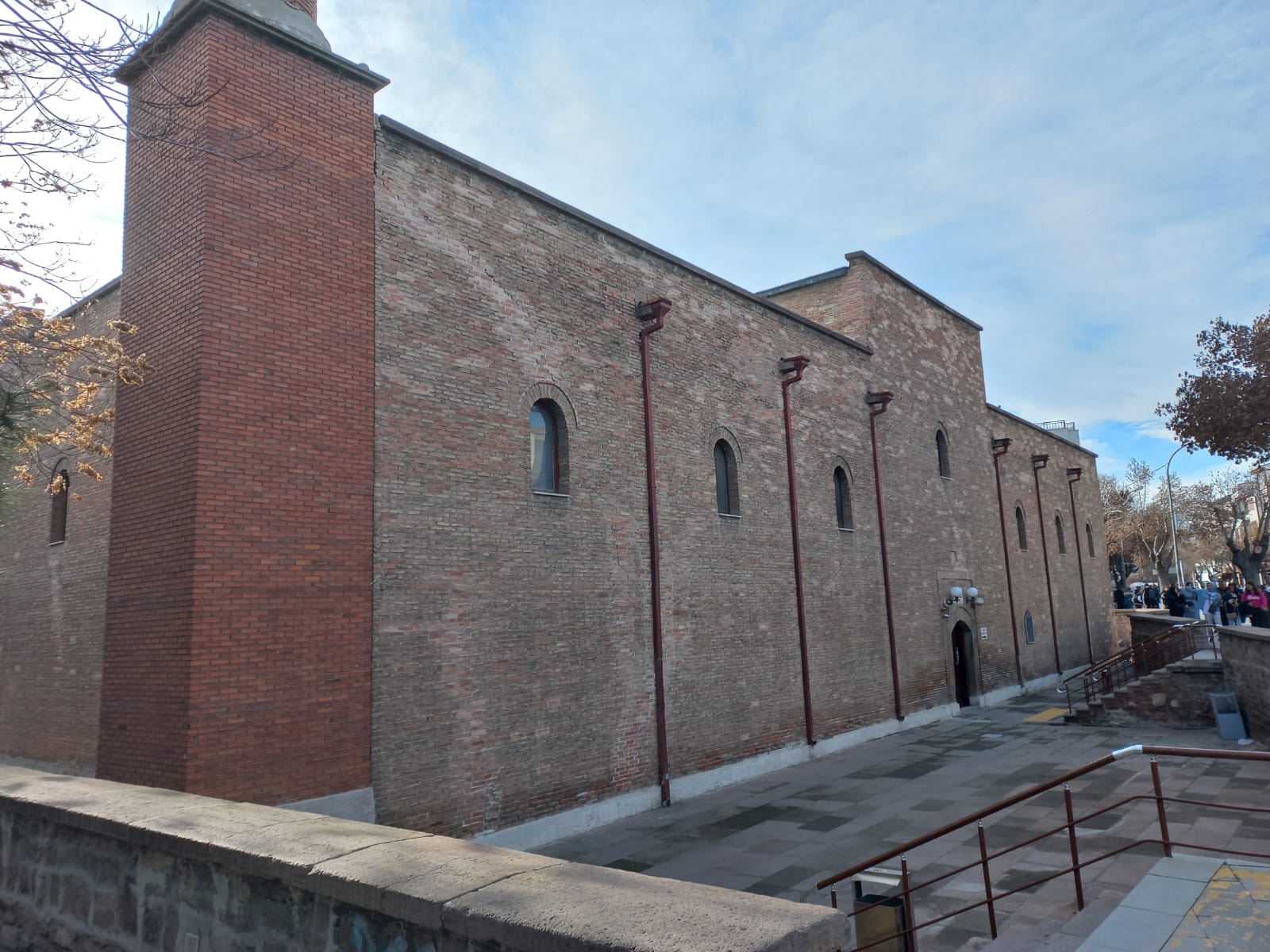İPLİKÇİ MOSQUE
Konya İplikçi Mosque is an important Seljuk period monument built in the early 13th century and has undergone many changes over time. Built in 1201-2 AD (598 H. 598) during the reign of Sultan Alaeddin Keykubad for Friday prayers in his neighborhood, this mosque is one of the most important examples of Islamic architecture and especially of the Seljuk style. İplikçi Mosque stands out as one of the rare Seljuk mosques in Anatolia built in the same period using bricks.
Among those who played a role in its construction were Ebü’l-Fazl Abdülcebbâr of Tabriz, the founding trustee of the Altun-aba Madrasa, İplikçi Necîbüddin Ayaz, and the merchant Hacı Emrullah. The mosque, named after Iplikçi, means “one who chooses yarn” in Turkish and has been rebuilt many times throughout history. Expanded in 1333 by Mesudzâde Hacı Ebubekir, the mosque was damaged in a fire before 1584, but was restored by the merchant Hacı Emrullah. These restorations helped the mosque to preserve its early architectural elements, especially traces of the 13th century mihrab.
The architecture of the İplikçi Mosque was designed according to a typical Seljuk plan. The floor plan of the mosque measures approximately 30 meters by 40 meters and consists of seven arched naves running perpendicular to the mihrab wall, three transverse aisles and three by seven domes supported by arches. The roof over the first two naves is supported by cross vaults, while the roof over the third nave is based on barrel vaults. The height of the minaret of the mosque has increased significantly over time.
The İplikçi Mosque has been adapted to different uses throughout history and was repaired by the Directorate of Museums in 1945 and took its present form. In 1951, the mosque was opened as the Classical Artifacts Department of the Konya Museum, and in 1960 it was reused as a place of worship. This shows that İplikçi Mosque assumed a cultural role beyond being just a religious building.
Focusing on the social structure of the period, during the Seljuk period when the İplikçi Mosque was built, society was organized under a centralized administration led by Sultan Alaeddin Keykubad. The mosque was built with the support of the Sultan and the vizier Sahip Ata Fahrettin Ali and left an important mark on the social structure of the period with the contributions of the rich merchant class. The advances in art, architecture and science during the Seljuk period are emphasized by the use of brick and the care in the architectural details of the İplikçi Mosque.
The İplikçi Mosque’s relationship with its surroundings draws attention, especially by establishing a structural connection with the Altun-aba Madrasah. Excavations revealed traces of an arch that may have belonged to the madrasah. This shows that the architectural elements and structures around the mosque are integrated with each other. The special design of the fountain of the İplikçi Mosque is a detail in which the opposite columns make it possible to communicate with each other in whispers. The acoustic phenomenon of the fountain enhances the social interaction of the people around the mosque, emphasizing that this sacred space is a meeting point where the community comes together.
In conclusion, the İplikçi Mosque has undergone changes throughout history. It stands out as one of the important cultural heritages of Konya with its architecture integrated with social life. Bearing the characteristics of Seljuk period architecture, this mosque stands out not only as a place of religious worship, but also as a place where the community comes together, interacts and shares cultural values.
Address
Website
Visiting Hours
Closing Time: 17. 00
Box Office Closing Time: 16. 40
Open every day





